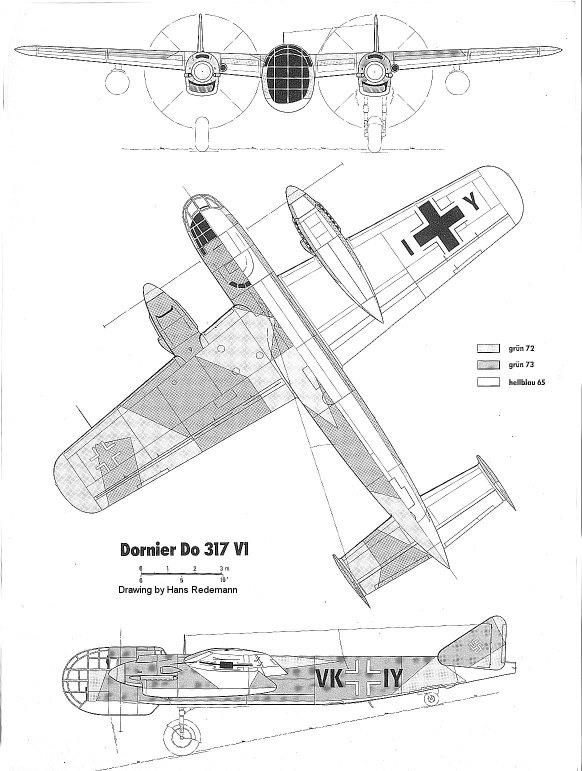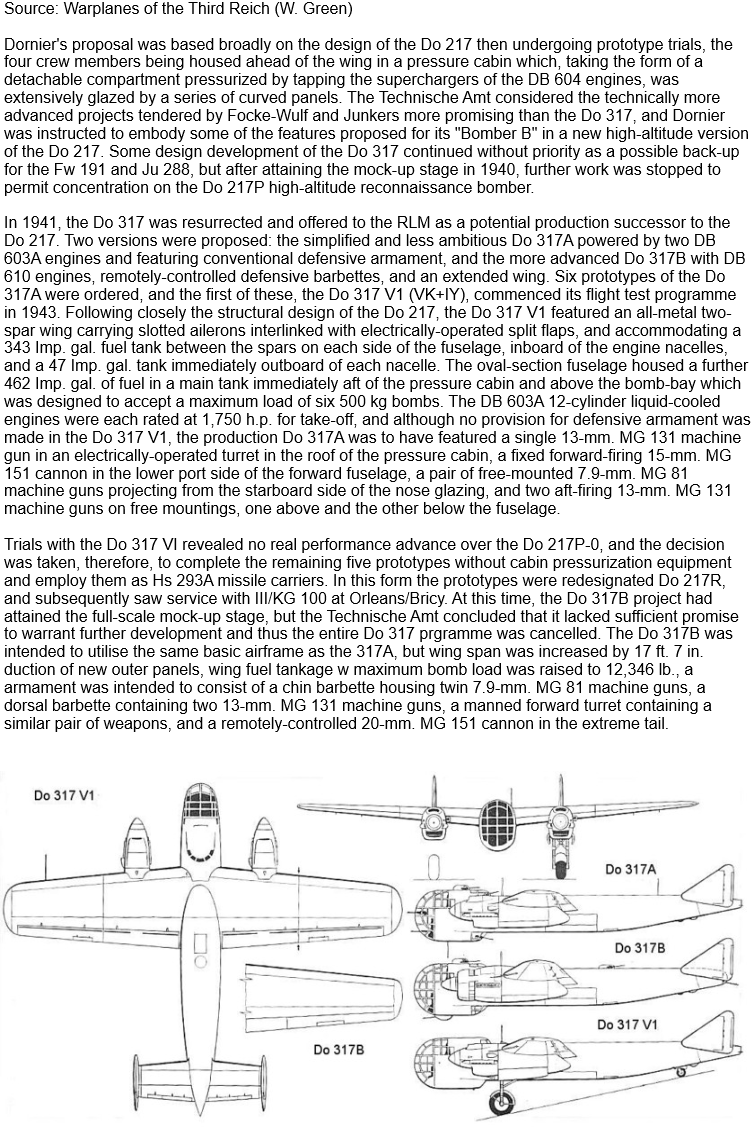| Type |
V1 4-seat bomber |
A 4-seat bomber |
B 4-seat bomber |
| Engine |
|
2 Daimler-Benz DB 603B |
2 Daimler-Benz DB 610A/B |
| Dimensions |
Length , height , span , wing area , |
Span 20.64 m, length 16.80 m, height 5.64 m, wingarea 68.00 m2 |
|
| Weights |
Empty , loaded , max. take off weight |
Empty 9955 kg,normal 12180 kg, load 6470 kg, max. 18650 kg |
|
| Performance |
Max.. speed , cruising speed , range , endurance , service ceiling , climb |
Max. speed 560 km/h at 6000 m, cruising speed 420 km/h, climb 4.2 m/s at sea level, to 2000 m 7.0 min., to 4000 m 14.5 min., to 6000 m 23.5 min., service ceiling 9800 m, range 3980 km, required field to 20 m altitude 1000 m, landing speed 133 km/h |
|
| Armament |
|
Bombload 4000 kg, A1-Stand 1 MG 81Z - 2000 rounds, A2-Stand 1 MG 151 - 250 rounds, B1-Stand 1 MG 131 - 1000 rounds,B2-Stand 1 MG 131 - 1000 rounds, C-Stand 1 MG 131 - 1000 rounds |
|





